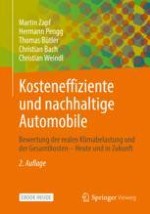2021 | OriginalPaper | Buchkapitel
8. Executive Summary
verfasst von : Martin Zapf, Hermann Pengg, Thomas Bütler, Christian Bach, Christian Weindl
Erschienen in: Kosteneffiziente und nachhaltige Automobile
Verlag: Springer Fachmedien Wiesbaden
Aktivieren Sie unsere intelligente Suche, um passende Fachinhalte oder Patente zu finden.
Wählen Sie Textabschnitte aus um mit Künstlicher Intelligenz passenden Patente zu finden. powered by
Markieren Sie Textabschnitte, um KI-gestützt weitere passende Inhalte zu finden. powered by
